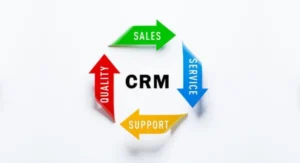Understanding the Employee Retention Credit: A Valuable Resource for Small Businesses
By TOI Desk Report
August 6, 2023
Update on : August 6, 2023

Small businesses play a crucial role in the economy, driving innovation, and providing employment opportunities.
However, running a small business can be challenging, especially during times of economic uncertainty. The COVID-19 pandemic brought about unprecedented disruptions, leading to financial strain for many businesses.
To support struggling businesses and encourage employee retention, the U.S. government introduced the Employee Retention Tax Credit (ERTC). This powerful incentive aims to help small businesses retain their workforce and stay afloat during challenging times.
The Employee Retention Tax Credit, often referred to as ERTC, is a refundable tax credit provided under the Coronavirus Aid, Relief, and Economic Security (CARES) Act, which was signed into law in March 2020. The credit was later expanded and extended through subsequent legislation to continue supporting businesses during the ongoing pandemic.
Eligibility Criteria for the Employee Retention Tax Credit
To avail of the Employee Retention Tax Credit, small businesses need to meet specific eligibility criteria. As a general guideline, a small business is eligible if it experienced either of the following:
- Partial or Full Suspension of Operations: If a small business faced government-imposed restrictions that resulted in either a partial or full suspension of their operations, they could qualify for the ERTC.
- Significant Decline in Gross Receipts: Alternatively, businesses that experienced a significant decline in gross receipts are also eligible for the tax credit. The specific threshold for this decline varied depending on the legislation in effect at the time.
- PPC: It’s essential to note that businesses that received the Paycheck Protection Program (PPP) loans were initially ineligible for the ERTC. However, the Taxpayer Certainty and Disaster Tax Relief Act of 2020 made it possible for businesses to claim the ERTC retroactively, even if they received PPP loans.
Calculating the Employee Retention Tax Credit
The calculation of the Employee Retention Tax Credit depends on the number of qualified wages paid to eligible employees during the eligible period.
Generally, eligible employers can receive a tax credit equal to 50% of qualified wages, including health plan expenses, paid to each eligible employee, up to a maximum of $10,000 in qualified wages per employee. This means that the maximum tax credit per employee is $5,000.
For businesses that were severely impacted by the pandemic, the ERTC proved to be a lifeline, helping them offset the costs of keeping employees on the payroll during times of reduced revenue and uncertainty.
Interplay with Other Relief Measures
The Employee Retention Tax Credit was designed to complement other relief measures like the Paycheck Protection Program. In the earlier stages of the pandemic, businesses often had to make a tough decision between applying for PPP loans or claiming the ERTC.
The initial legislation did not allow businesses to take advantage of both simultaneously to avoid double-dipping. However, as the situation evolved, lawmakers recognized the need for additional support, leading to legislative changes that allowed businesses to utilize both programs, but not for the same wages.
The Importance of Employee Retention
Employee retention is a critical aspect of any successful business. High turnover can be costly and disruptive to operations. By providing a financial incentive to retain employees, the ERTC encouraged businesses to keep their workforce intact, even during turbulent times.
During a crisis, employees’ job security and stability become uncertain. The ERTC helped alleviate some of these concerns, as businesses were better equipped to retain employees and navigate the challenges posed by the pandemic. This, in turn, fostered a sense of loyalty and commitment among employees, leading to increased productivity and engagement.
Conclusion
In conclusion, the Employee Retention Tax Credit proved to be a valuable resource for small businesses during the COVID-19 pandemic.
This refundable tax credit provided financial support to eligible employers, helping them retain their employees and keep their businesses operational. By understanding the eligibility criteria and how to calculate the credit, small businesses could make the most of this beneficial program.
As the business landscape continues to evolve, it’s essential to stay informed about any changes or updates to the ERTC. While the COVID-19 pandemic highlighted the significance of such relief measures, the ERTC’s impact extends beyond the crisis period, providing businesses with valuable tools to navigate challenges and foster a stable and productive workforce. The Employee Retention Tax Credit stands as a testament to the government’s commitment to supporting small businesses, recognizing their vital role in driving economic growth and prosperity.
Read more: Understanding the Employee Retention Credit: A Valuable Resource for Small Businesses















